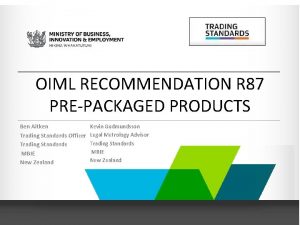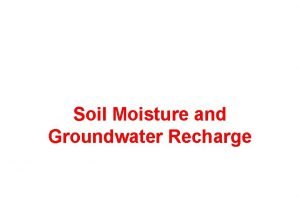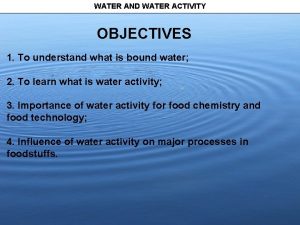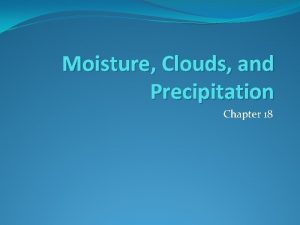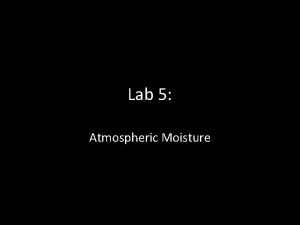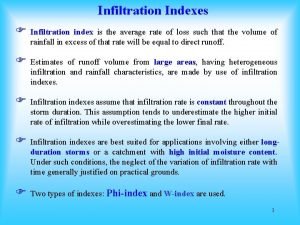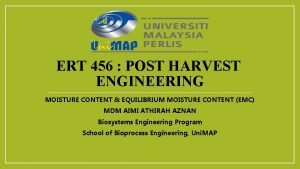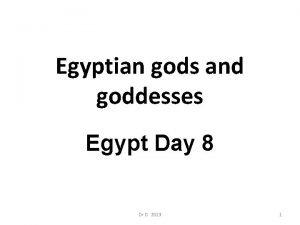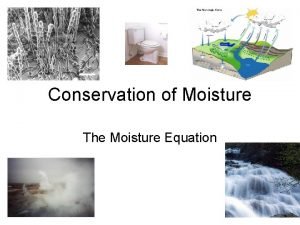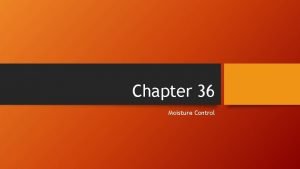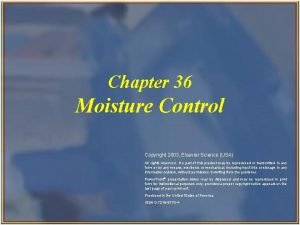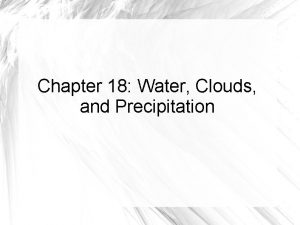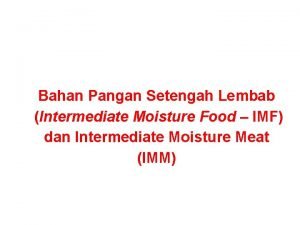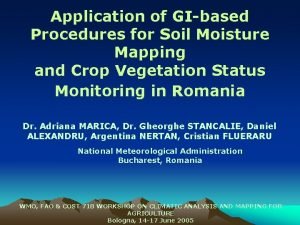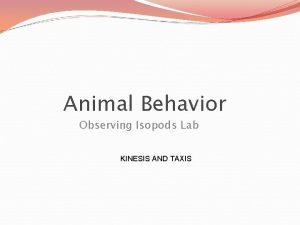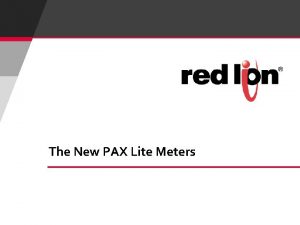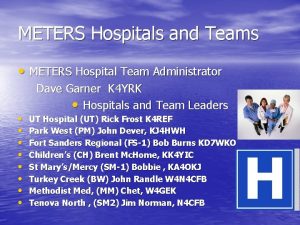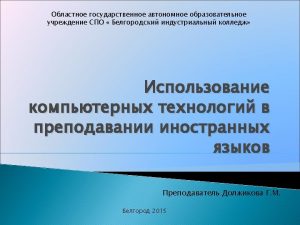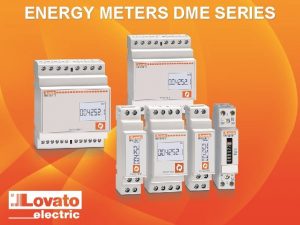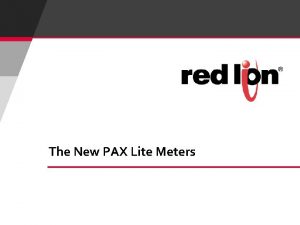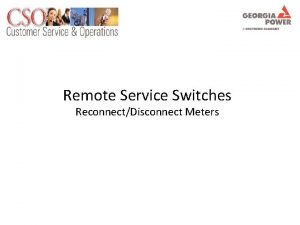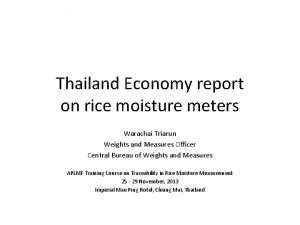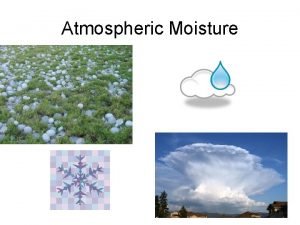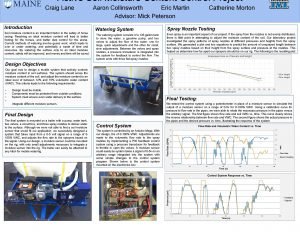Introduction of OIML R 59 Moisture Meters for














- Slides: 14

Introduction of OIML R 59 Moisture Meters for Cereal Grains and Oilseeds (1984) Dr. Tsuyoshi Matsumoto Chair of APLMF WG on Quality Measurements of Agricultural Products (QMAP) National Metrology Institute of Japan (NMIJ) National Institute of Advanced Industrial Science and Technology (AIST) at APLMF Training Course on Traceability in Rice Moisture Measurement 25 - 29 November, 2013 Imperial Mae Ping Hotel, Chiang Mai, Thailand 1

CONTENTS 1. Introduction of OIML 2. Outline of OIML R 59 3. Current situation of revision of R 59, and a new OIML Recommendation for protein measurement 4. Summary comments 2

1. Introduction of OIML (International Organization of Legal Metrology) • Established in 1955 following the conclusion of OIML Convention. • 59 member states and 67 corresponding member states (Nov 2013) • A standard setting organization under the agreement on WTO/TBT in together with ISO and IEC. • Dedicated to harmonize national metrology regulations of member states to remove technical barriers to trade. • To help developing countries to set up sound national legal metrology systems. Presidential Council International Conference of Legal Metrology (IML) Every 4 years International Committee of Legal Metrology (CIML) P. Mason (UK) Every year Technical Committee (18 TCs) Subcommittee(45 SCs) International Working Group (IWC) International Bureau of Legal Metrology (BIML) S. Patoray English Translation Center National Working Group (NWC) OIML Organization Chart

1. Introduction of OIML Recommendations (R) • Model technical regulations of measuring instruments consisting of: (1) technical requirements, (2) test procedures for conformity to the requirements, and (3) test report format. • Developed by TC/SC and PG (Project Group in TC or SC), then approved by CIML • Member states are morally recommended to implement the Recommendation in their national systems. • More than 100 recommendations (R 7 -R 143) have been published and be downloaded freely from the OIML website.

1. Introduction of OIML TC/SC Regarding Quality Measurements of Agricultural Products (1) TC 17/SC 1: Humidity Document: R 59: Moisture Meters for Cereal Grains and Oilseeds Secretariat: PR China & USA (2) TC 17/SC 8: Instruments for Quality Analysis of Agricultural Products Document: New Rxxx: Protein Measuring Instruments for Cereal Grain and Oil Seeds Secretariat: Australia 5

2. Outline of OIML R 59 ”Moisture meters for cereal grains and oilseeds” (1984) 1. Scope: measuring moisture contents of grains and oilseeds with a direct or indirect (conversion table…) method. 2. Field of Application: applicable only to static samples (do not move during measurement) in the categories A & B (see clauses 5 & 6). 3. General: definitions of terms and general requirements to moisture meters (moisture content, conversion tables, etc. ). Moisture content (MC) is defined as a loss of mass under test conditions in accordance with ISO 712*. *ISO 712 : Cereals and cereal products - Determination of moisture content - Routine reference method 6

2. Outline of OIML R 59 (cont. ) 4. General technical requirements: construction, indication device, conversion tables, security requirements to measurement, etc. These requirements apply to both of the categories A & B (clauses 5 & 6). 5. Moisture meters of category A (automatic): Entirely automatic and single complete instrument with a printing device. Security to measurement results is required. 6. Moisture meters of category B (non-automatic): Moisture meters which do not belong to the category A. The completeness of the instrument and security are also required.

2. Outline of OIML R 59 (cont. ) 7. Inscription: markings and identifications regarding; manufacturer, model, serial number, class, range, calibration, type approval, measuring range, temperature range of use, etc. (if applicable). 8. Maximum permissible errors (MPE) are defined for; (1) purposes: type approval, initial verification and verifications in-service, (2) categories of the instruments: classes I & II, and (3) kinds of sample: maize, rice, sorghum, sunflower. . . 9. For example, MPEs in type approval for the instruments in ‘class I’ used for rice are 0. 4 % in mass fraction (≤ 10 % MC) and 4 % in moisture content (>10 % MC).

2. Outline of OIML R 59 (cont. ) 9. Seals for protection and guarantee, table certification marks: parts containing mechanical and/or electrical measuring functions shall be sealed from unauthorized access. 10. Sanction of the controls – Stamping: attachment of verification mark(s) is required. 11. Provisions to assure fairness of the measurement operations: additional requirements regarding; guarantee by the seller, installation condition (instrument should be visible by all parties), choice & sampling method of the sample, and condition of use. 9

2. Outline of OIML R 59 (cont. ) 12. Appendix I: Practical reference methods for the verification. ISO 712 (1979) is referred. 13. Appendix II: Routine reference method for the verification. ISO 665* (1977) is referred. 14. Appendix III: Metrological controls. Specifics the procedures of type approval and initial/periodical verifications. ISO 7700* part 1 and 2 (1984) are referred as the reference method for checking the moisture meters. However, appendix III is given as an example. *ISO 665: Oilseeds - Determination of moisture and volatile matter content *ISO 7700 : Check of the calibration of moisture meters - Part 1: Moisture meters for cereals. - Part 2: Moisture meters for oilseeds.

3. 1 Current situation of revision of R 59 2001: TC 17/SC 1 meeting was held in Berlin to start revising R 59 (1984). SC 1 agreed that US would provide 1 CD (1 st committee draft). 2002: The US completed 1 CD. TC 17/SC 1 secretariat in PR China circulated the 1 CD to the member countries for comments. 2003: The US developed 2 CD and it was circulated to the members. 2003: SC 1 meeting was held in Beijing to review 2 CD. 2004: The US drafted 3 CD. The secretariat circulated the 3 CD and 4 CD. 2007: SC 1 meeting was held at NIST in US. 5 CD was developed. 2009: SC 1 members submitted comments to 5 CD in May. 2010: SC 1 meeting was held in Orlando in US, and 6 CD was proposed. 2013: SC 1 meeting was held at NIST in US in July to discuss on 6 CD. 2014? Draft recommendation might be proposed to CIML? Meeting in 2013 11

3. 2 Current situation of R 59 CD 6 (additional information) ü The scope covers indirect measurement methods for MC which has a direct and digital indicating device. ü Environmental conditions (temp. , humidity, power…) for storage, operation and testing were specified clearly. ü Sample temperature range including the difference between the sample and the instrument was specified. ü Minimum sample size was specified (each country may decide it). ü MPEs did not change significantly, but other limitations (error sift, repeatability…) were added. MPEs in field inspections were added. ü Many requirements were added to protect software and calibration parameters based on OIML D 31. Higher severity level of D 31 was applied only to the instruments connected to an open network. ü Requirements for EMC (electromagnetic compatibility) were added based on OIML D 11. ü Test procedures for type approval were added. ü Requirements to sample treatment were added. ü Test report format was added.

3. 3 A new OIML Recommendation for protein measurement (additional information) 2002: 37 th CIML decided to set up a new SC: TC 17/SC 8 (Instruments for quality analysis of agricultural products) with the secretariat in Australia. 2003: SC 8 informed members to start drafting a new OIML Recommendation on protein measurements. 2004: SC 8 held a meeting in Sydney. An outline of the draft was proposed. 2006: SC 8 circulated 1 CD of the recommendation. 2007: SC 8 meeting was held at NIST in US. 2010: 2 CD was provided. SC 8 meeting on 2 CD was held in Orlando in US. 2012: 3 CD was provided, and SC 8 members submitted comments. 2013: 4 CD was provided in April. SC 8 meeting was held at NIST in US in July with TC 17/SC 1 meeting. Comments on 4 CD were discussed. 13

4. Summary Comments • R 59 practically aims at moisture meters based on electrical capacitance and near infrared methods. • In the revision of R 59, WG on QMAP has submitted comments from a viewpoint of Asian economies where many resistance-type meters are used. • Active participation from Asian OIML members to the discussion is requested. • CCQM (Consul. Com. for Amount of Substances) in CIPM considers moisture content is important, but they consider it is difficult to deal with it due to strong dependence on sample and methodology. 14
 Oiml r 87
Oiml r 87 A capillary tube
A capillary tube What is water
What is water Chapter 18 moisture clouds and precipitation
Chapter 18 moisture clouds and precipitation Lab 5 atmospheric moisture
Lab 5 atmospheric moisture Scs curve number
Scs curve number Define equilibrium moisture content
Define equilibrium moisture content Orsis god
Orsis god Moisture equation
Moisture equation Dental dam clamp parts include the bow and the jaws
Dental dam clamp parts include the bow and the jaws Chapter 36 moisture control
Chapter 36 moisture control Localized convective lifting definition
Localized convective lifting definition Intermediate moisture meat
Intermediate moisture meat Moisture mapping software
Moisture mapping software Kinesis vs taxis behavior
Kinesis vs taxis behavior
